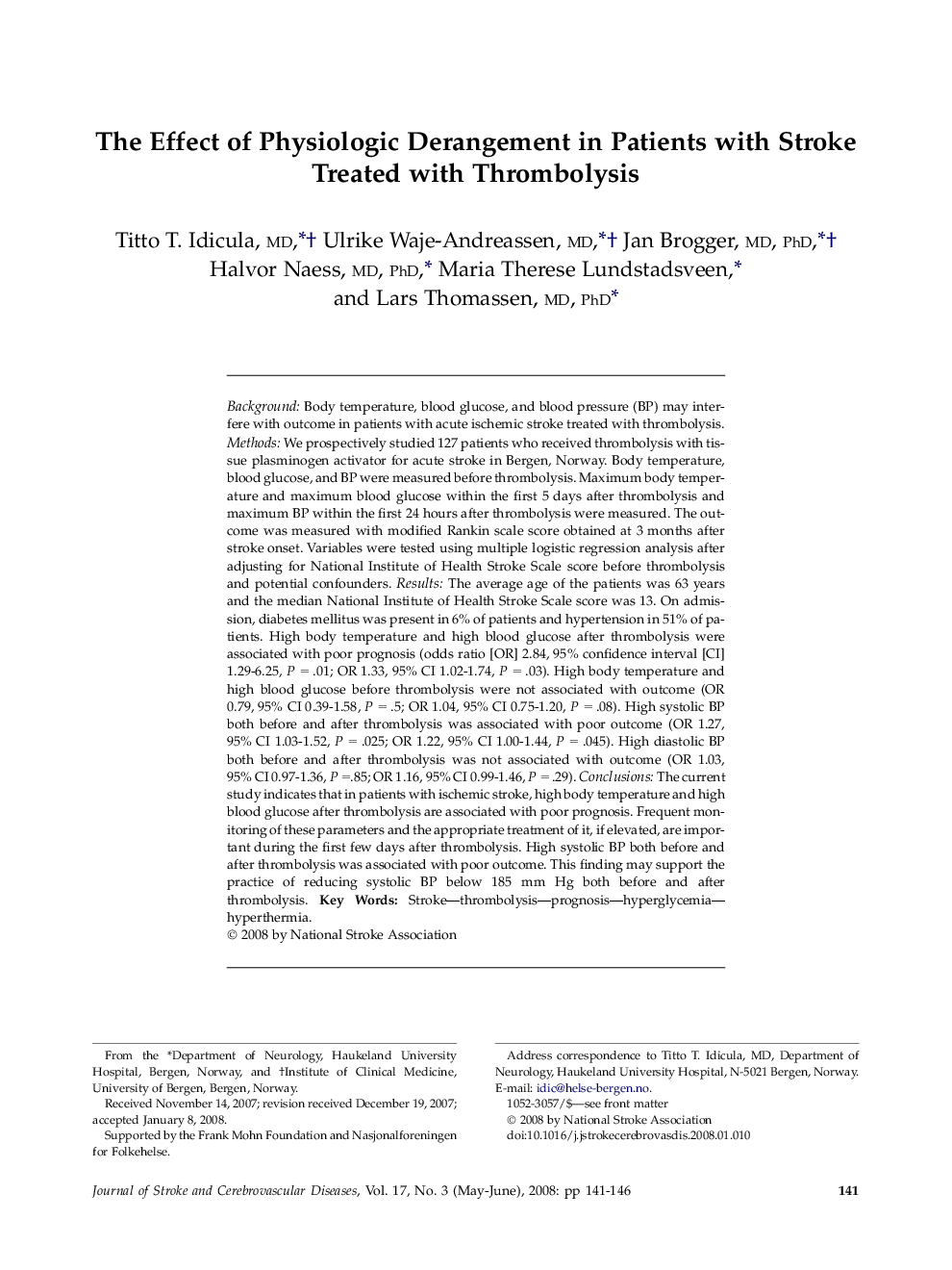| کد مقاله | کد نشریه | سال انتشار | مقاله انگلیسی | نسخه تمام متن |
|---|---|---|---|---|
| 2702878 | 1144567 | 2008 | 6 صفحه PDF | دانلود رایگان |

BackgroundBody temperature, blood glucose, and blood pressure (BP) may interfere with outcome in patients with acute ischemic stroke treated with thrombolysis.MethodsWe prospectively studied 127 patients who received thrombolysis with tissue plasminogen activator for acute stroke in Bergen, Norway. Body temperature, blood glucose, and BP were measured before thrombolysis. Maximum body temperature and maximum blood glucose within the first 5 days after thrombolysis and maximum BP within the first 24 hours after thrombolysis were measured. The outcome was measured with modified Rankin scale score obtained at 3 months after stroke onset. Variables were tested using multiple logistic regression analysis after adjusting for National Institute of Health Stroke Scale score before thrombolysis and potential confounders.ResultsThe average age of the patients was 63 years and the median National Institute of Health Stroke Scale score was 13. On admission, diabetes mellitus was present in 6% of patients and hypertension in 51% of patients. High body temperature and high blood glucose after thrombolysis were associated with poor prognosis (odds ratio [OR] 2.84, 95% confidence interval [CI] 1.29-6.25, P = .01; OR 1.33, 95% CI 1.02-1.74, P = .03). High body temperature and high blood glucose before thrombolysis were not associated with outcome (OR 0.79, 95% CI 0.39-1.58, P = .5; OR 1.04, 95% CI 0.75-1.20, P = .08). High systolic BP both before and after thrombolysis was associated with poor outcome (OR 1.27, 95% CI 1.03-1.52, P = .025; OR 1.22, 95% CI 1.00-1.44, P = .045). High diastolic BP both before and after thrombolysis was not associated with outcome (OR 1.03, 95% CI 0.97-1.36, P =.85; OR 1.16, 95% CI 0.99-1.46, P = .29).ConclusionsThe current study indicates that in patients with ischemic stroke, high body temperature and high blood glucose after thrombolysis are associated with poor prognosis. Frequent monitoring of these parameters and the appropriate treatment of it, if elevated, are important during the first few days after thrombolysis. High systolic BP both before and after thrombolysis was associated with poor outcome. This finding may support the practice of reducing systolic BP below 185 mm Hg both before and after thrombolysis.
Journal: Journal of Stroke and Cerebrovascular Diseases - Volume 17, Issue 3, May–June 2008, Pages 141–146